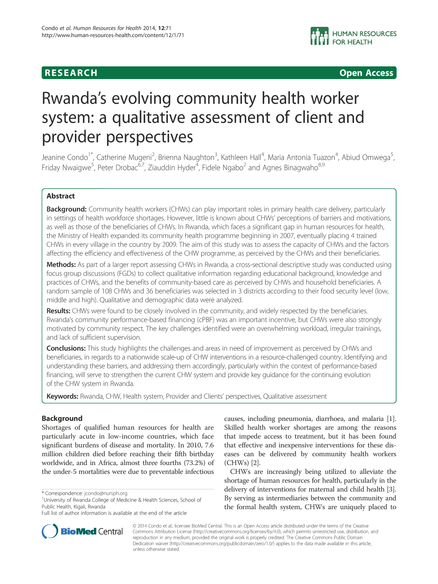Rwanda’s evolving community health worker system: a qualitative assessment of client and provider perspectives
This study highlights the challenges <span class="attribute-to-highlight medbox">and</span> areas in need of improvement as perceived by CHWs <span class="attribute-to-highlight medbox">and</span> beneficiaries, in regards to a nationwide scale-up of CHW interventions in a resource-challenged country. Identifying <span class="attribute-to-highlight medbox">and</span> understanding these barriers, <span class="attribute-to-highlight medbox">and</span> addressing them accordingly, particularly within the context of performance-based financing, will serve to strengthen the current CHW system <span class="attribute-to-highlight medbox">and</span> provide key guidance for the continuing evolution of the CHW system in Rwanda.


